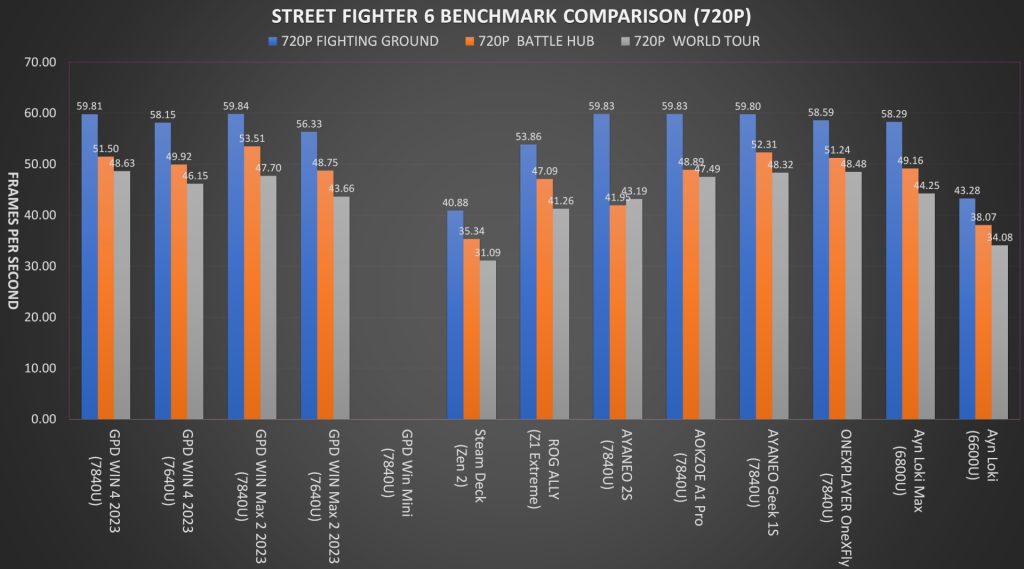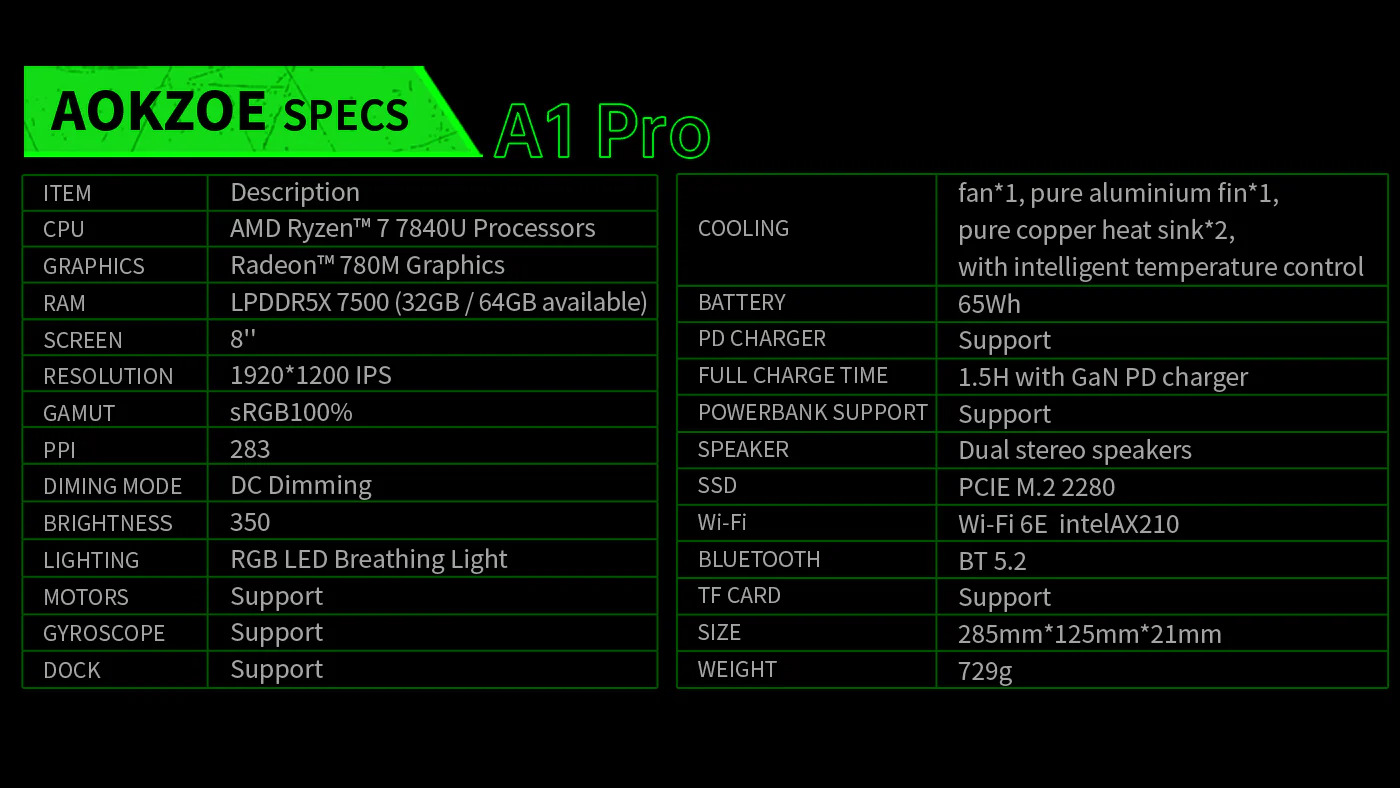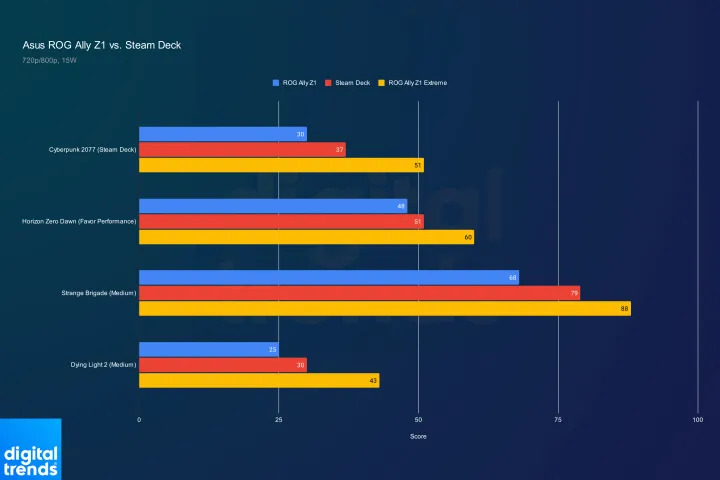Story Highlights
- Steam Deck was a brilliant innovation that introduced us to the wonders of handheld PCs.
- The console’s enormous popularity invited many competitors like ASUS, Lenovo, Ayaneo, Aokzoe, etc.
- The reason they couldn’t beat Steam Deck despite being beefier is that they cost an arm and a leg.
One of the most impressive achievements of technological development was the miniaturization of equipment and devices. I think saying how computers used to the size of a room would be going a little too far back, so I have a more appropriate example. If I talk about my childhood, these smartphones we see as everyday things were practically non-existent, and even when they first came out, were extremely rare.
Goes to show how convenient technology has become. Oh, and now these miniature devices are not just small, but also powerful. Back then, a smaller gadget though more comfortable, was less in power than a full-size device. This was true even a decade ago, but now we see portable stuff that can easily outperform its larger ancestors. I must know, I’ve gotten used to seeing handheld PCs destroying my full-size setup easily.

We Have The Steam Deck To Thank For This Comfort
You might think I’m sulking, but that’s not the case. In fact, I’m happy for this new development, and I honestly believe with consistent progress handheld devices might even become the dominant product in the future. But, right now, there are some limitations. However, that doesn’t mean there’s been no progress at all, no. Handheld PCs have come a long way since their inception by Valve’s Steam Deck primarily.
We’re all aware of the existence of portable video game consoles. They’ve existed for a long time now, and you must have even owned some of them, I did too. But the idea of a completely portable PC was a skeptical one if you ask me. Laptops and smartphones existed, but even then PCs had some undeniable advantages. The most important was the raw power to price ratio. That’s why Valve’s Steam Deck initiated felt both interesting and doubtful to me.
The Steam Deck is a game changer. And by that, I mean it literally changed the way I played my games.
byu/WDR_937 inpatientgamers
Back to the present, and I can’t tell you how glad I am that I was proven wrong. Steam Deck exceeded my expectations in every way. Not only is it a sublime gaming experience, but its portable nature lends it a comfort PC doesn’t have. Of course, portable consoles like Switch exist, but Steam Deck’s advantage came from how it was essentially a PC, the possibilities were endless. You had a package with the comfort of portable gaming and the versatility of a computer.
Handheld PCs Have Come A Long Way
With all those benefits under the hood, Steam Deck’s popularity was no surprise. And it’s because of Valve’s brilliant product that handheld PCs became a very fascinating venture for others as well. It wasn’t long before these portable computers built specifically with gaming in mind started pouring in. ASUS jumped into the handheld PCs market with its ROG Ally, and Lenovo presented Legion Go to compete with Steam Deck.
After a few months of ownership of both, I wanted to offer my perspective on the Steam Deck and the ROG Ally.
byu/OverlyOptimisticNerd inSteamDeck
Similarly, the handheld PCs just got better from here on. One of the most important names in this department is AyaNeo, as they have several devices, each packing a ton of heat and available with both small and bigger screens. In addition, OneXPlayer has a solid device, and so does Aokzoe, all of which do the job very well. But, I know what you might say next: “ROG Ally and Legion Go aside, why haven’t I heard about all these?”
I think I should mention this, but if I have to list a con of the Steam Deck, it has to be its weaker performance. And all the companies aiming to take it down knew this, too. Thus, almost every device after Steam Deck packed a much stronger punch in terms of raw power. Then why do they continue to remain rather unknown? Well, I can think of some reasons like the limitations of Windows 11 as an OS, but the most important is certainly the price.

Sadly, Beefy Hardware Invited Even Beefier Prices
As I mentioned before, Steam Deck was comparatively weaker in performance compared to what was available. Its “Aerith” APU is a 6nm 4 core/8 thread chip with an RDNA 2 GPU having 8 CUs. With the benefit of improved architecture, it was close to around a GTX 1050 (~1.6 teraflops). Of course, Steam optimization and OS did wonders for it, and it had to run things on an 800p screen, but the fact remains it was a weaker device.
In comparison, let’s look at the ASUS ROG Ally Z1 Extreme variant. The Z1 extreme chip has AMD’s more recent 4nm Zen 4 CPU packing 8 cores/16 threads, and an RDNA 3 GPU with 12 CUs, clocking around 4+ tflops (yeah, the 8.6 tflops was an exaggeration). Plus, it also features a 1080p 120Hz screen, it’s an improvement in every way on paper. However, do keep in mind that it also costs 700$. If you think this is high, just wait a little more.
As a European, 850 euro for this seems too much
byu/tribes33 inROGAlly
Lenovo Legion Go uses a similar chip and also comes at the same price. However, move on to the other handheld PCs mentioned above like Ayaneo and Aokzoe, and you get a difference. These devices pack a Ryzen 7 7840u. In terms of specs, it is identical to the Z1 extreme, but the Z1x is designed for a little lower voltage, so it’s very slightly slower. However, these devices cost more than $1000, with the Aokzoe A1 Pro demanding 1100 bucks. Yikes.

Steam Deck Remains Unrivaled In Affordability
With all said and done, I keep returning to the Steam Deck. Doesn’t matter if it isn’t as powerful, at least it’s light on the pocket, and I think that’s the thing that matters the most for a lot of people. When it comes to consoles, affordability and ease of use are their principal selling points. PCs have always been more powerful, but console havers just want to get a device that easily runs everything it’s supposed to at a good price.
And at the end of the day, handheld PCs are also like consoles. If they’re affordable, people would be attracted to their other features too like comfortability. But if they cost above $1000, most sane people would steer clear of them (It’s broke in my case). Thus, I know my trusty Steam Deck has me covered. Not only can it play a lot of games with a decent framerate, but the cheapest model can be acquired for $399, or even less if used, which can be a great deal.
In affordability, no one has been able to beat Steam Deck, and thus they couldn’t beat it in popularity either, despite being a lot more powerful. ASUS tried to do something about it with a $599 model featuring the Z1 basic chipset, but that was a 4 CU chip, even worse than the Steam Deck. It took the performance lower than the Deck, yet somehow cost more than it. I believe it was a very illogical decision, but let’s say at least ASUS tried.

The New MSI Claw Has Me Hopeful For Handheld PCs Becoming More Affordable
It seems this affordability point is going to become even more relevant now. Recently, there was a new addition to the portable PC family, and this is where things get interesting. The latest member is MSI Claw A1M, and it is the debut of Intel in the handheld PCs race. The new MSI Claw features an Intel Ultra 7 155H chipset, which is a gigantic 16-core/22-thread chipset. This also comes with a high power usage, and of course, a bigger battery.
The complete performance analysis is yet to come, but from what we know so far, it seems to be considerably more powerful than any other alternative, at least in the high-power mode. And if it does prove to be stronger, boy will that be a problem for ROG Ally and Legion Go. Why’s that, because it comes with the same price tag, $699. If you’re getting better performance at the same price, what’s more to think?
However, let’s look at the bright side of this for us price-conscious people. If the MSI Claw can put forth greater performance at the same price, it means the prices of other less-powerful devices would have to be lowered. And not just that, other companies need to start re-assessing their price decisions as well. In the long run, it can make handheld PCs more affordable, and I want nothing more. It’s also not a bad thing if it improves their popularity among budget gamers.
Thanks! Do share your feedback with us. ⚡
How can we make this post better? Your help would be appreciated. ✍



